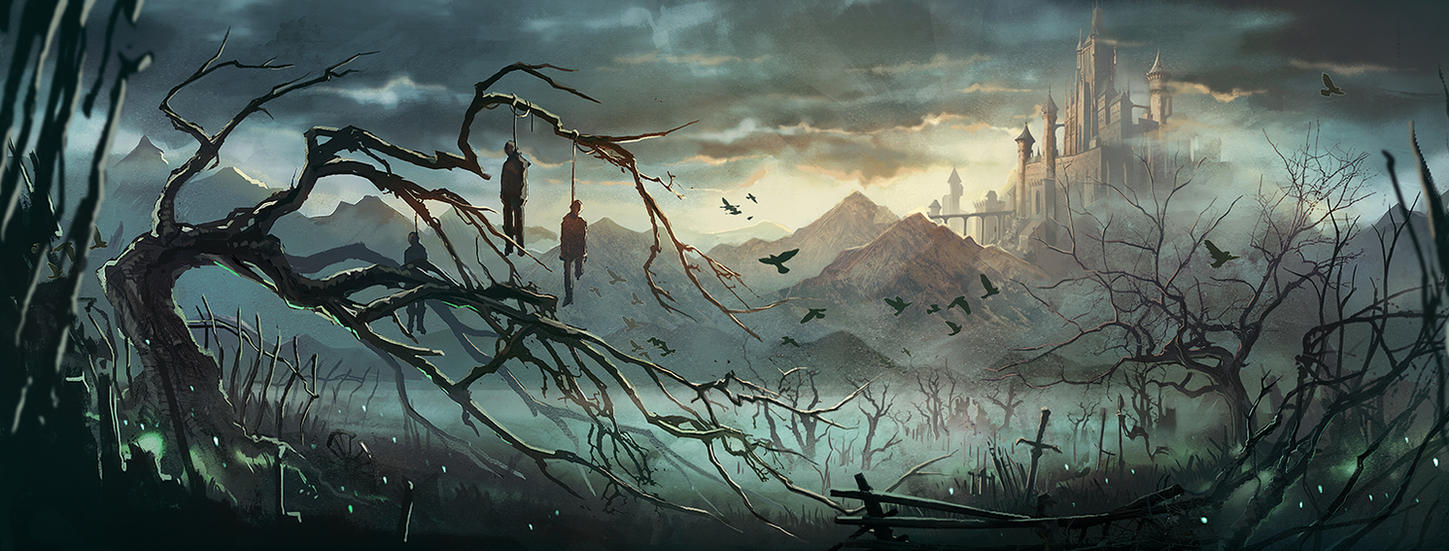At that moment the dwarf cleric starts seeing a statue during his slumber. This statue, symbolizing Corellon Larethian shows a bloodstain in its torso, as if someone had recently been attacked near it. The dwarf wakes up rapidly and with a surprised face and raspy voice tells his just awoken companions "Something bad is about to happen".
Visions are something that always end up appearing in a D&D campaign one way or the other. However, we as DMs end up having to railroad the campaign for the PCs to find or make something for this vision to transform into reality. Another alternative would be to just let something happen in the background while characters are elsewhere and let them find the result of this glimpse from the future.
That, I find extremely boring. Visions are supposed to make the player whose character had it feel special. Something is bound to happen, and only the players can stop it from happening (or not). It may make them choose decisions they wouldn't otherwise choose, and most importantly, let the player who knows what's going to happen to tell the other players "Told ya" when the results end up appearing.
But, above all other reasons, you as a DM need to try creating a vision for the players at least once for the reward you will get. You might make them see a humanoid shadow hanging from a tree on session 3 from your campaign on the road while travelling to a town. Perfect! You planted the seed of doubt. Now watch as they become paranoid thinking about which lovable NPC is going to commit suicide. You may have no idea who is going to die, and that's the best part. Start paying attention throughout the sessions who the PCs talk to and who they meddle with. Let's say Lumiere Von Evil, the count from the city of Rivercross finds out the players dealt with the smugglers from the city and imprisoned them, leaving the count without his primary income.
Credit to the artist Radittz
What have you done so far? You created a REALLY generic vision, from a place noone knows, with a dead guy/gal you still don't know. That made you create a villainous NPC who may hang someone close to the PCs for bothering him as a message. Didn't the players deal with the troubles from Rivercross and continued their way elsewhere? Doesn't matter, you never revealed which tree that was, who died or where.
Session 10 arrives. Your players need to get some information from a butcher from another totally different city who had seen too much about a conflict. The PCs have met this butcher before, who revealed some information for the players to start investigating, but refused to reveal something as he was too scared to talk about it yet. By the time they understand (maybe on session 12) the information the butcher knows is vital to the case, they go find him again and see him hanging from the oak tree in front of his home. Players freak out! They knew this was gonna happen! The DM is a genius! He had this planned 9 sessions ago!
Another possible outcome: PCs arrest RandomCultist#3, who while being thrown into jail reveals "It's too late now. The ritual is in progress, and the butcher was ordered to commit suicide if he didn't want his family to be tortured for life". At that moment the players start linking the past events and remember about the vision! The tree next to the butcher's house!
Players will cheer. They just cracked the case, and are feeling like great detectives! But that is just the beginning. Now they need to decide between saving the butcher's life and arriving late to the ritual which will invoke an archdevil to the Material Plane, or letting him end his life and save the rest of the city, while feeling remorseful for not stopping something they know will happen. Third choice would be to split up (best idea ever!), letting the rogue who knows the city the most save the butcher's life while the rest go stop the cultists, letting the rogue then arrive with backup in the most crucial moment of the fight against the cultist leader.
Their reactions to those specific moments are something precious to any DM. The players knew from the very start something was bound to happen, and they have the chance to intervene. They will also take you, the DM, as an evil mastermind who had it all planned from the very beginning, when in fact you just were waiting for the perfect moment to use the vision you had revealed months ago.
So, to sum up to create a successful vision for the players you have to take the following things into account:
- Make it as vague as you can, leaving lots of details to the players' imagination
- Wait for the best moment to arrive. It might not be next session, nor the following one. Let them forget a bit about that terrible (or confusing) visage
- Make it appear when they least expect it, maybe making them confront a difficult decision.

As english is not my native language, please correct me if I make some mistake as I also use this to improve my writing
ReplyDeleteThanks and hope you enjoyed the article :)